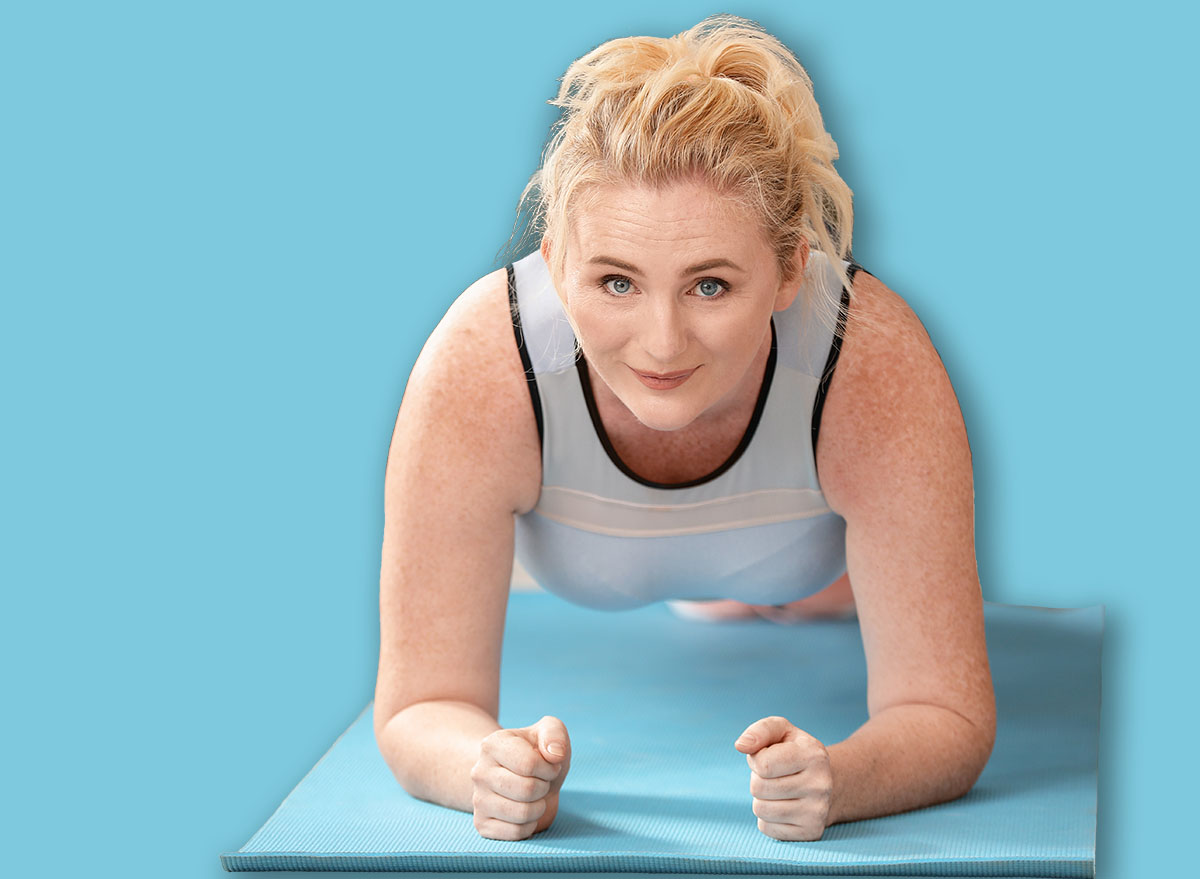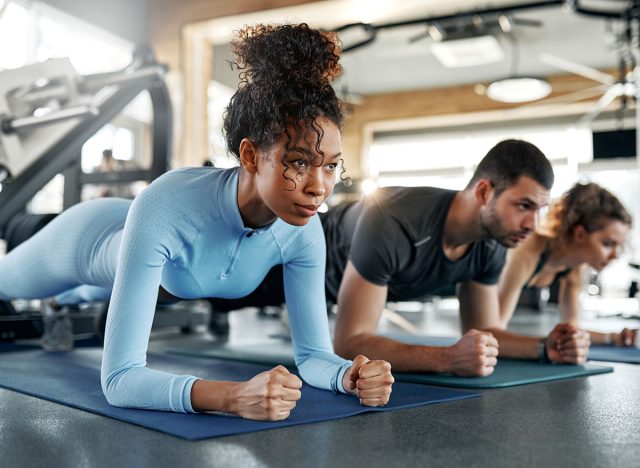If You Can Hold a Plank This Long After 50, Your Core Is Stronger Than Most

Building a strong core is essential for many reasons. After all, it supports your spine while improving balance, stability, and posture. It also helps you perform daily tasks with ease. One of the best exercises you can perform to build core strength is the plank. This isometric hold activates numerous core muscles at the same time, including the abs, oblique, and back. We spoke with an expert who shares the ideal length of time needed to hold a plank after 50 to know if your core is stronger than most. Let’s find out where you rank!
The Importance of Planks

“The plank serves as an authentic assessment method that provides straightforward results. The test requires no equipment manipulation and no machine-based stabilization systems,” says Matt Bandelier, director of business development at Eden Health Club. “Your body faces gravity while you measure the duration of time. The basic nature of this test makes it suitable for people aged 50 and above.”
Holding a classic plank is a stellar indicator of your ability to maintain static strength while working against external forces. This bodyweight challenge also tests real-world strength. Another plus? Plank holds allow you to track progress over time while identifying potential issues before they escalate.
“Your core muscles function as stabilizers when you perform activities such as grocery carrying, ground object lifting, and walking on uneven surfaces. The plank exercise demonstrates your ability to perform this function,” Bandelier explains.
Plank holds have become a golden standard of core strength because they show how efficiently your core functions in everyday life.
Main Core Muscles Worked During Planks

The plank fires up your anterior core muscles, including your external obliques, transverse abdominis, and rectus abdominis.
“The test evaluates your ability to generate internal abdominal pressure while maintaining core stability through your entire abdominal muscle group, including your obliques,” says Bandelier. “Your transverse abdominis functions as your deep stabilizer because it forms a corset-like structure around your torso … The obliques function to stabilize your body during rotational movements and provide side-to-side control. The rectus abdominis muscle functions to flex your spine.”
The three muscles work in harmony to create a strong, flexible trunk structure.
If You Can Hold a Plank This Long After 50, Your Core Is Stronger Than Most

While core strength naturally declines with age, regular exercise can help you build and preserve muscle.
“The decline in core strength does not need to occur naturally. It’s mitigated. Research evidence demonstrates that core training exercises help people maintain their plank endurance at higher levels than expected,” says Bandelier.
But just how long should you aim to hold your plank for?
“A person who can maintain a perfect plank position for thirty seconds at fifty years old or older demonstrates superior core strength than most people in their age group. Your core strength exceeds what most people in your age group can achieve,” Bandelier points out.
Those who are 50+ are typically able to hold a straight plank for 15 to 20 seconds before their body begins to fatigue or lose form.
“The ability to maintain a tall plank position for thirty seconds places you above average in your age group,” Bandelier says.
Now, if you’re able to hold a plank for 45 seconds to one minute, this signals “exceptional performance level.”
“Males who are 50 or older should aim to hold a plank for one minute to reach the benchmark,” Bandelier tells us. “Women aged 50 and older should aim to hold a plank for 45 seconds to one minute to achieve top performance.”
One minute should be the maximum benchmark time for most people, as form begins to deteriorate after reaching this point.
“Your body experiences two main effects when you stay in the plank position for more than 60 seconds: your lower back extends beyond its normal range, and your muscles become fatigued, while your exercise benefits decrease,” Bandelier notes.